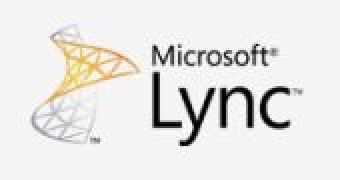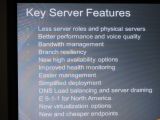At the end of October 2010 Microsoft released to manufacturing the next generation of its Unified Communications platform, swapping the old brand Office Communications Server for the new Lync Server. Lync Server 2010 will hit general availability on November 17th, at a New York event, but customers can already download a taste of the product, with the Release Candidate (RC) Build still available for download.
Earlier this week, while at TechEd 2010 in Berlin, I had the chance to attend a Lync Server 2010 workshop, and I must tell you that there are sufficient reasons to at least test drive the new UC offering from Microsoft, if not to also upgrade.
For those not familiar with Lync, the upcoming UC platform from the software giant offers a comprehensive range of capabilities and features including presence, instant messaging, conferencing (audio, video, web, group chat), enterprise voice etc. available not only on the PC, but also via the browser, and even mobile devices.
Under the Lync family brand, the Redmond company is offering customers Lync Server 2010, Lync Online, the Lync 2010 client and the Lync Web App.
The Lync workshop I mentioned above also offered insight on the key features of the server, and to me at least, they’re equivalent with great reasons for companies to consider adopting the new product.
1. Less server roles and fewer physical servers – with Lync server, all media traffic can bypass the Mediation Server and, get from the client straight to the gateway or IP-PBX with Media Bypass.
Companies can now opt to have the Mediation Server role be co-located on a front-end server, meaning that they will need less physical server, and spend less on hardware.
In addition, Lync workloads are also supported on virtualized servers, which has the potential of translating into additional cost savings.
2. Voice enhancements – Lync Server 2010 adds a range of voice capabilities on top of what was available in Communications Server 2007 R2, such as branch office resiliency; data center resiliency; call admission control; call park; enhanced 911 (for the US); common area phones and media bypass.
3. Bandwidth management - Lync Server 2010 comes with Call Admission Control, which is designed to make sure that calls over WAN links have sufficient network bandwidth at their disposal.
4. Branch resiliency – Microsoft has worked to ensure that branch offices will be able to continue leveraging core voice features of Lync Server, even in the eventuality in which the office’s WAN link fails, or even is an entire data center is lost.
Now, just to make this clear. Customers will only get to use a subset of the Lync Server 2010 capabilities in the eventuality of a failure, but they will still be able to make calls, for example.
5. Better health monitoring – with the new Dashboard, IT administrators will have access to an overview of the health and usage of the Lync Server infrastructure in their organization.
But there are additional monitoring improvements, including Actionable Alerts, Synthetic Transactions and a reduced number of false-positives through enhanced and more accurate alerting.
6. Easier management – there are new architecture changes in Microsoft’s upcoming UC platform, but also fresh tools designed to streamline management.
Admins will be able to take advantage of the Central Management Store, the Lync Server 2010 Control Panel and the Lync Server Windows PowerShell Command-Line Interface doe those hardcore enough to go GUI-less.
7. New planning and deployment tools – the successor of the Planning Tool for Microsoft Office Communications Server 2007 R2 is now capable of not only allowing customers to plan deployments of Lync Server 2010 but also enabling them to export the result to a configuration file.
It is this configuration file which can subsequently be used to automate the Lync Server deployment via the Topology Builder.
8. DNS Load Balancing – the Lync Server 2010 communications software introduces DNS Load Balancing which is meant to reduce the dependency on Hardware Load Balancer (HLB) for SIP-based load balancing.
9. New virtualization options – according to Microsoft, Lync Server 2010 is designed to play nice with such virtualization technology as Hyper-V and VMWare.
10. Integration – as is the case with additional Microsoft offerings, Lync Server 2010 is designed to integrate seamlessly with products from the company, allowing customers to make the best out of their existing technology investments.
Lync Server 2010 will integrate with Office 2010, and of course with SharePoint 2010.

 14 DAY TRIAL //
14 DAY TRIAL // 
